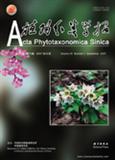

Cytological studies were carried out for 13 taxa in the genus Iris from China, of which three species, namely I. subdichotoma, I. delavayi and I. cuniculiformis were endemic to China. The chromosome numbers in somatic cells for each taxon were as follows: I. subdichotoma, 2n=42; I. japonica, 2n=34; I. wattii, 2n=30; I. laevigata, 2n=32; I. ruthenica var. nana, 2n=42; I. collettii, 2n=28; I. dolichosiphon and I. cuniculiformis, 2n=22; I. bulleyana, I. delavayi, I. chrysographes, I. forrestii, and I. lactea var. chinensis, 2n=40. The chromosome number and karyotype of I. cuniculiformis were reported here for the first time and its karyotype formula was 2n=22=4m+6sm+12st(2SAT). The karyotype of I. dolichosiphon was also firstly reported, whose karyotype formula was 2n=22=4m+12sm+6st. The chromosome number and karyotype of I. subdichotoma was newly observed, whose karyotype formula was 2n=42=20m+22sm. Three populations of I. ruthenica var. nana from different localities were investigated and all the three populations had the same chromosome numbers different than previously reported. The karyotype formulae for I. ruthenica var. nana were shown as follows: Zhongdian population, 2n=42=30m+12sm (2SAT); Lijiang population, 2n=42=28m+14sm(2SAT); Nixi population, 2n=42=36m+6sm (4SAT). In addition, the 2n chromosome numbers of three subgenera Limniris, Iris and Nepalensis in the genus Iris from present results and previous reports were summarized. The results showed that the chromosome number varied considerably in subgen. Nepalensis, in which I. subdichotoma was possibly a key species between the genus Pardanthopsis and subgen. Nepalensis. Chromosome number of I. ruthenica was reported as 2n=84 which was twice as much as its